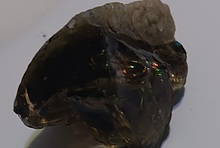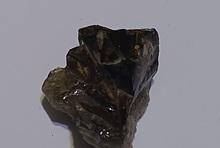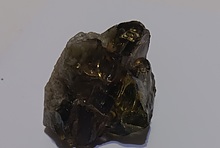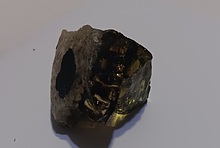Home PageAbout MindatThe Mindat ManualHistory of MindatCopyright StatusWho We AreContact UsAdvertise on Mindat
Donate to MindatCorporate SponsorshipSponsor a PageSponsored PagesMindat AdvertisersAdvertise on Mindat
Learning CenterWhat is a mineral?The most common minerals on earthInformation for EducatorsMindat ArticlesThe ElementsThe Rock H. Currier Digital LibraryGeologic Time
Minerals by PropertiesMinerals by ChemistryAdvanced Locality SearchRandom MineralRandom LocalitySearch by minIDLocalities Near MeSearch ArticlesSearch GlossaryMore Search Options
The Mindat ManualAdd a New PhotoRate PhotosLocality Edit ReportCoordinate Completion ReportAdd Glossary Item
Mining CompaniesStatisticsUsersMineral MuseumsClubs & OrganizationsMineral Shows & EventsThe Mindat DirectoryDevice SettingsThe Mineral Quiz
Photo SearchPhoto GalleriesSearch by ColorNew Photos TodayNew Photos YesterdayMembers' Photo GalleriesPast Photo of the Day GalleryPhotography
╳Discussions
💬 Home🔎 Search📅 LatestGroups
EducationOpen discussion area.Fakes & FraudsOpen discussion area.Field CollectingOpen discussion area.FossilsOpen discussion area.Gems and GemologyOpen discussion area.GeneralOpen discussion area.How to ContributeOpen discussion area.Identity HelpOpen discussion area.Improving Mindat.orgOpen discussion area.LocalitiesOpen discussion area.Lost and Stolen SpecimensOpen discussion area.MarketplaceOpen discussion area.MeteoritesOpen discussion area.Mindat ProductsOpen discussion area.Mineral ExchangesOpen discussion area.Mineral PhotographyOpen discussion area.Mineral ShowsOpen discussion area.Mineralogical ClassificationOpen discussion area.Mineralogy CourseOpen discussion area.MineralsOpen discussion area.Minerals and MuseumsOpen discussion area.PhotosOpen discussion area.Techniques for CollectorsOpen discussion area.The Rock H. Currier Digital LibraryOpen discussion area.UV MineralsOpen discussion area.Recent Images in Discussions
Techniques for Collectorspainting micromount corks

14th Jul 2011 23:55 UTCRoy Wood
I always had trouble painting the small corks for micromount supports until I stuck them on a piece of tape attached to a support. Now it is easier to paint and they have a safe place to dry.
Roy

15th Jul 2011 03:11 UTCTom Trebisky
painting my fingertips), then perch them on top of a desk lamp to dry. With the heat and hot air rising this
only takes a minute or two.

15th Jul 2011 04:10 UTCKelly Nash 🌟 Expert
15th Jul 2011 23:50 UTCDon Saathoff Expert
Don
16th Jul 2011 01:55 UTCGary Moldovany
16th Jul 2011 04:05 UTCEugene & Sharon Cisneros Expert
Gene
16th Jul 2011 15:28 UTCJoe Mulvey
I can load up the pins with 24 corks and paint at once. Impaled, the corks are about 1cm above the cardboard.
I have little numbers next to each pin so that when I mount specimens, I can note the specimen to the number in case I forget which is which.
The assembly line approach all the way through works better for me.
Joe

21st Jul 2011 20:58 UTCJonathan Zvonko Levinger Expert
this are non reflective black and do not release the paint in to the glue.
My last purchase was 600 and I am running out after only two months.

22nd Jul 2011 02:24 UTCRoy Wood
Thank you,
Roy
10th Aug 2011 21:21 UTCRay Hill Expert
11th Aug 2011 01:54 UTCGary Moldovany

14th Feb 2012 00:33 UTCHans Swarts
My contribution - see attached .pdf.
Best Regards,
Hans

14th Feb 2012 00:43 UTCHans Swarts
Whoops!!! After posting the last one, I realized the .pdf I attached contained more than my little article (written for MMNE - MicroMounters of New England newsletter).
I hop I have not violated any ownership or copyright issues by doing this.
My apologies - I will withdraw the post with attached .pdf if I've stepped on any toes...
Best Regards,
Hans

25th Feb 2012 17:48 UTCDana Morong
I found one paragraph on the second page of his column "The Micro-Mounter" by Neal Yedlin in the January-February 1958 issue of Rocks and Minerals magazine (vol. 33, #1-2, p. 48). Part of it is as follows:
"Try this for blackening corks, balsa wood or paper. A "Magic Marker" kit. A loaded handy container with a fibre glass wick makes the fluid instantly available. Dries on contact to a fine black. No smudge, smear or accidental spilling. Waterproof. Costs less than a dollar, postpaid, and lasts for ages. Available from Arthur Goodwin Co. (he's a member of the m/m clan), 2524 Brookfield Ave., Baltimore, Md."
Was the inventor of the original Magic Marker a collector? I doubt you can order them from him now, but they, and their same-purpose lookalikes, are available in many a shop and even at the malls. What a boon to the world that a collector has done to easier blacken his corks and make his micromounts better mounted.

21st Mar 2012 14:33 UTCDoug Rambo Expert
Here is the technique that we use:
We submerse each size of cork in a bowl of ink and then individually pull each one out (using tweezers), we then blot the base of the cork on a piece of cheesecloth, and set them on a 3-4 inch wide piece of clean glass to let them dry. The corks dry under a halogen desk lamp for 2 to 3 hours before we take them off of the glass with tweezers.
-Doug
27th Mar 2012 19:54 UTCRon Layton
28th Mar 2012 15:07 UTCDavid Von Bargen Manager

30th Mar 2012 22:54 UTCDana E. Wilson
I used to use the pin-and-cardboard method, or just dumped corks in a flat, sprayed and shaken multiple times until all the corks were covered.
For me the quickest and cleanest method is to take a strip of heavy-duty double-sided tape and stick it on a piece of card stock. Then I stick the corks to the other side, and spray from several directions. The corks are uniformly covered (except for their bases that will be surfaced glued to the box liner) and they are all lined up neatly, ready to use.
You can paint 40-60 corks on a 2" X 4" piece of tape.
I use the double-sided tape used by woodturners, available from Woodcraft, because that's what I have in our shop. It's pricey! I'll bet tape available from Uline by carpetlayers would work as well and is a quarter of the price.
An occasional cork, maybe one in 20, comes apart when it's pulled from the adhesive. I consider that to be QC that eliminates defective corks.
Rustoleum spray paint, flat black, has worked best for me.
I've tried retouching corks from time-to-time with indelible magic marker but it leaves a shiny, slightly iridescent mark that I find quite ugly.

16th Feb 2013 21:19 UTCChristopher Spratt
Chris. Spratt
Victoria, BC

22nd Feb 2013 15:50 UTCTim Jokela Jr
Ziploc bag, India Ink, old strainer. Let 'em soak, fish 'em out, give 'em a shake, and spread 'em out over paper towels, roll and shake 'em around so they don't stick together.
Quick and easy, but major potential for serious mess. Do not do this over a nice rug, or, in fact, anywhere nice. Do it outdoors.
Blackens all the nooks and crannies, with a matte finish.

22nd Feb 2016 15:17 UTCDoug Rambo Expert
Kind regards,
Doug Rambo

22nd Feb 2016 17:15 UTCD. Peck

23rd Feb 2016 00:03 UTCRobert Rothenberg
I too am sorry to hear of your dad's passing. I always enjoyed talking with him (and you) and exchanging specimens. He will be missed.
Bob

24th Feb 2016 03:32 UTCHenry Barwood
I'm really sorry to hear this. I enjoyed seeing you and your dad over the years.
Henry




Mindat.org is an outreach project of the Hudson Institute of Mineralogy, a 501(c)(3) not-for-profit organization.
Copyright © mindat.org and the Hudson Institute of Mineralogy 1993-2024, except where stated. Most political location boundaries are © OpenStreetMap contributors. Mindat.org relies on the contributions of thousands of members and supporters. Founded in 2000 by Jolyon Ralph.
Privacy Policy - Terms & Conditions - Contact Us / DMCA issues - Report a bug/vulnerability Current server date and time: April 19, 2024 03:55:37
Copyright © mindat.org and the Hudson Institute of Mineralogy 1993-2024, except where stated. Most political location boundaries are © OpenStreetMap contributors. Mindat.org relies on the contributions of thousands of members and supporters. Founded in 2000 by Jolyon Ralph.
Privacy Policy - Terms & Conditions - Contact Us / DMCA issues - Report a bug/vulnerability Current server date and time: April 19, 2024 03:55:37











